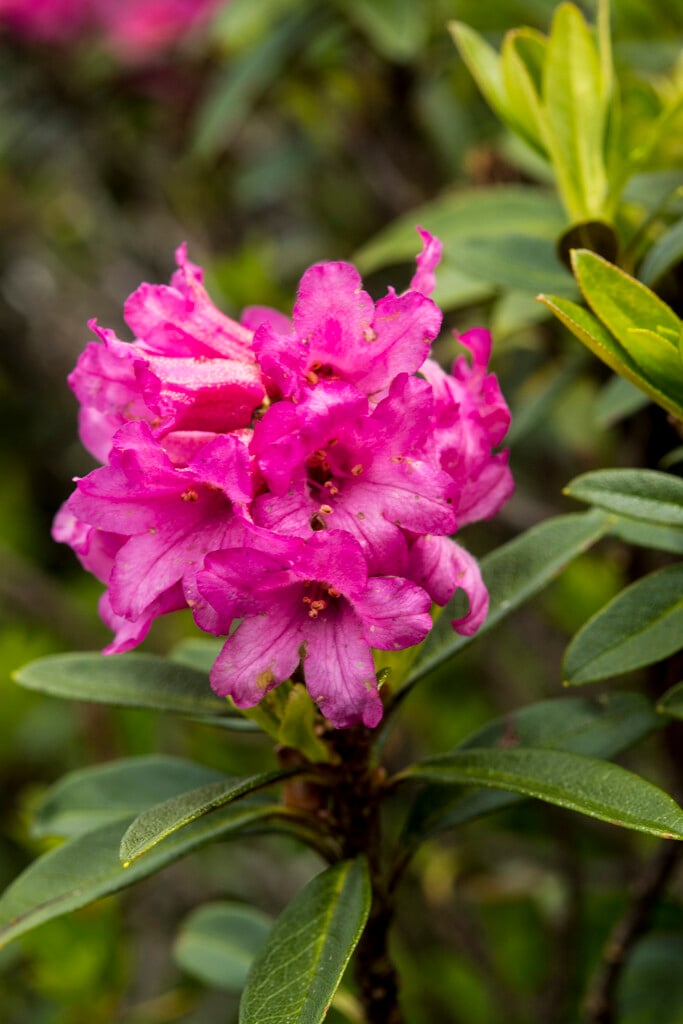Rhododendron ferrugineum
alpenrose
A small, spreading, evergreen shrub with dark, glossy green leaves which are red-brown and scaly beneath. Small trusses of rose-pink to crimson and occasionally white tubular flowers appear in June.

Buy this plant
Size
Ultimate height
0.5–1 metresTime to ultimate height
10–20 yearsUltimate spread
0.5–1 metresGrowing conditions
Moisture
Moist but well–drainedpH
AcidColour & scent
| Stem | Flower | Foliage | Fruit | |
| Spring | Green | |||
|---|---|---|---|---|
| Summer | Pink | Green | ||
| Autumn | Green | |||
| Winter | Green |
Position
- Full sun
- Partial shade
Aspect
East–facing or North–facing or South–facing or West–facing
Exposure
Exposed Hardiness
H6Botanical details
- Family
- Ericaceae
- Native to GB / Ireland
- No
- Foliage
- Evergreen
- Habit
- Spreading branched
- Potentially harmful
- Harmful if eaten. Wear gloves and other protective equipment when handling. Pets (dogs, cats, rabbits, tortoises) Harmful if eaten - for further information and contact numbers regarding pets, see the HTA guide to potentially harmful plants
- Genus
Rhododendron can be evergreen or deciduous shrubs or trees, with simple leaves, sometimes with a dense colourful indumentum of hairs on the lower side, and funnel-shaped, bell-shaped or tubular flowers that may be solitary or in short racemes
- Name status
Correct
- Plant range
- C Europe
How to grow
Cultivation
Grow in moist but well-drained, humus rich acid soil in sun or partial shade but avoid excessive refected heat from south facing walls and patios ; see rhododendron cultivation
Propagation
Propagate by semi-ripe cuttings in late summer
Suggested planting locations and garden types
- Cottage and informal garden
- Patio and container plants
- Low Maintenance
- Flower borders and beds
Pruning
Pests
May be susceptible to vine weevil, rhododendron leafhopper, pieris lacebug, scale insects, caterpillars and aphids
Diseases
May be susceptible to various Rhododendron diseases including powdery mildew, rhododendron petal blight, rhododendron bud blast, silver leaf and honey fungus
Get involved
The Royal Horticultural Society is the UK’s leading gardening charity. We aim to enrich everyone’s life through plants, and make the UK a greener and more beautiful place.